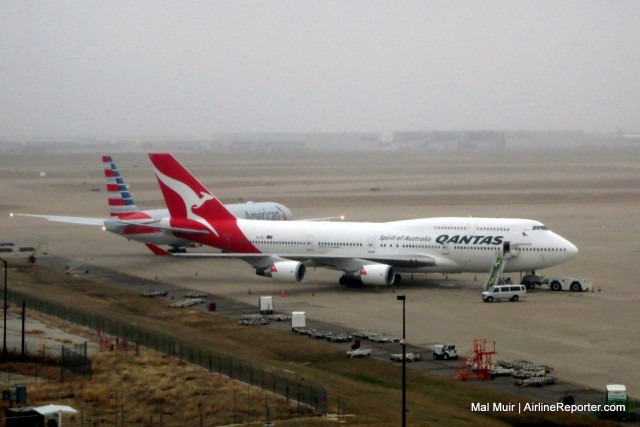
A Qantas 747-400ER and an American 777 on the ground at Dallas-Fort Worth… Soon a sight for Australian airports?
Traveling down under to Australia is one of the most heavily-restricted air travel markets. However, yesterday Qantas and American Airlines make some changes to their services over the Pacific to increase opportunities. As of the middle of December 2015, both American (AA) and Qantas (QF) are going re-add services that were previously cut.
In a joint press conference, Qantas and American announced ’œnew services’ over the Pacific. On the 17th of December, American will begin flying daily non-stop service from Los Angeles to Sydney on their new 777-300ER. A few days later, Qantas will begin the Sydney to San Francisco route with a 747-400.
’œOur customers have asked us to expand to important business markets across the Pacific, and flying our flagship aircraft, the Boeing 777-300ER, to Sydney will provide another world-class travel experience from our key gateway at LAX,’ says American CEO Doug Parker.
“For over 20 years, we’ve worked in partnership with American to give our customers the best network on both sides of the Pacific. We are excited to take the alliance to a new level and expand our services to new destinations including San Francisco,’ said Alan Joyce, CEO of Qantas Group.
Wait a second’¦ New destinations? I don’t think so!
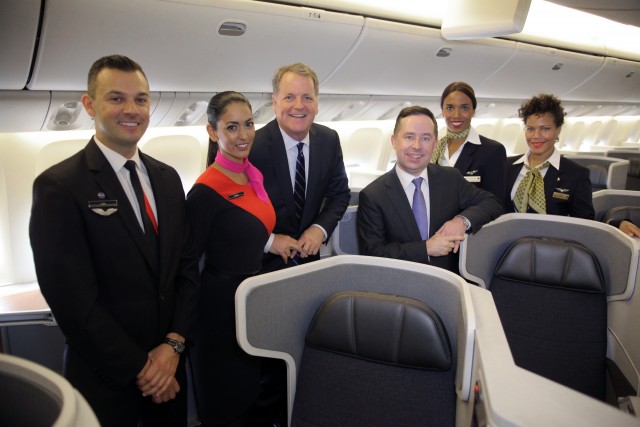
The CEOs of American Airlines (Doug Parker) and Qantas (Alan Joyce) pose with cabin crew inside an American Airlines 777-300ER – Photo: American Airlines
Let’s take a little trip into the history books to see that these really aren’t “new destinations” for either airline, but more of a return to those cities. Back in 1992, AA was flying across the Pacific using the good-old DC-10. But things were not working out for them again (at that point it was not their first time to get in on that route) and they decided to end their service. AA & QF decided to come to an agreement that has stood since that day to partner across the Pacific.
BONUS: Flying Qantas First On-board the A380
QF provides the planes, AA provides codeshares and service on the US end. Win-win for both sides, right? Well, AA has probably decided the third time’s a charm, and are now getting back into that route.
Qantas, at the moment, flies the most service of any airline between Australia and the USA, with daily A380 flights to Los Angeles from both Sydney and Melbourne. Add in service from Brisbane to LA, and then extra services on some days of the week from Melbourne and Sydney. There is also the Dallas-to-Sydney flight (currently the longest commercial flight in the world), which adds to become quite a bit of service to the continental U.S. (not even going to start on Hawaii, that is a whole other kettle of fish).
BONUS: Flying Onboard the American Airlines 777-300ER
So why is San Francisco a big deal? Well, it is a secondary west coast city that can be accessed from the east coast of Australia. For Qantas (and oneworld as a whole) the city isn’t all that great, because there is not that much in connecting traffic. However, from an O&D (origin and destination) perspective, this is a big city for business. Sure leisure travelers might be happy to go direct, but the Silicon Valley businesses will also be driving traffic.
Qantas used to serve SFO up until 2011, when they pulled their service, leaving only United. For United, this is their prime west coast service as they have a full hub to connect passengers.
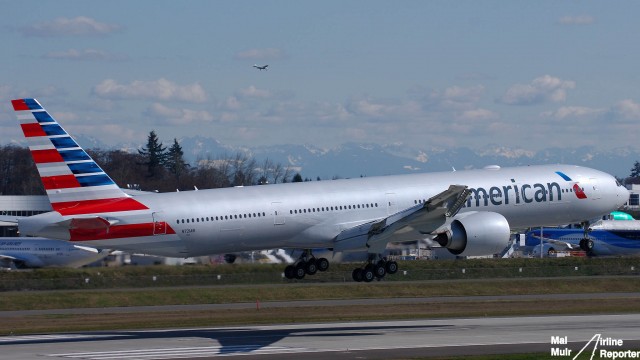
An American Airlines Boeing 777-300ER at Everett. These aircraft are the flagship for the airline, at present.
This isn’t all about just adding. By cutting the four extra ex-LAX Sydney services and one of the Melbourne services, Qantas will free up enough aircraft to operate SFO six days a week. So say goodbye to your double-daily flights from Sydney and the double services from Melbourne on certain days; you are now back to single A380s each day.
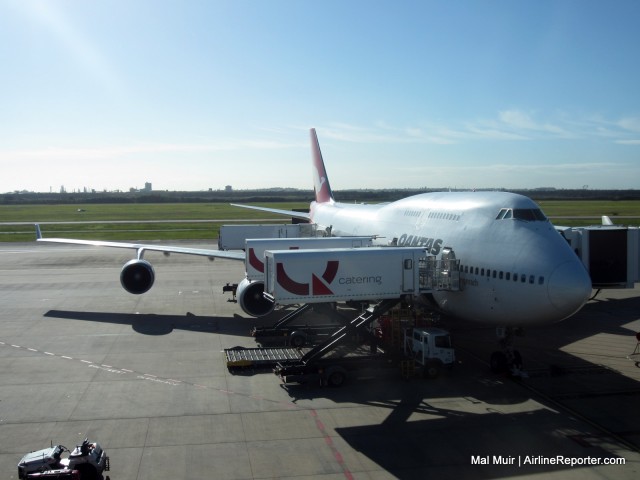
A Qantas 747-400ER was a common site in the USA. Not anymore! The U.S. services are relegated to a standard 400.
From a passenger perspective, though, this brings back some premium services to the SFO area. Qantas will operate a three-class 747-400 (Economy, Premium Economy, and Business).
BONUS: The World’s Longest Flight is on an A380
On the LAX route there will be some strong competion with United, Delta, and Virgin Australia that are all going up against the AA/QF combo.
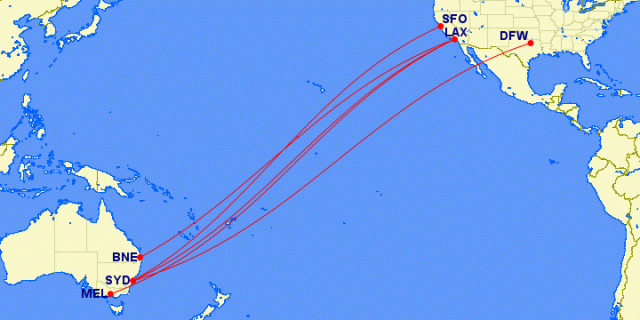
All the routes that, as of December, Qantas will fly to the Continental USA. That is a lot of service – Image: GCMap.com
To be perfectly honest, this announcement would normally be a non-event. Wow, an airline is adding a new route’¦ *snore*.
However, watching two airlines backflip on previous decisions, trying to make it sound all glamorous and amazing, is quite funny. Qantas is probably saying to itself, ’œWell, you know what, maybe it was a bad idea to leave San Francisco, hope you don’t mind us coming back’. Meanwhile, American is thinking ’œthird time’s a charm.’
Both of these decisions are great for the traveling public in the short-term; in the long-term, well, that remains to be seen.
When the ME3 start running across the Pacific, someone come get me. ‘Til then.. where did I leave my pillow? I need a nap.

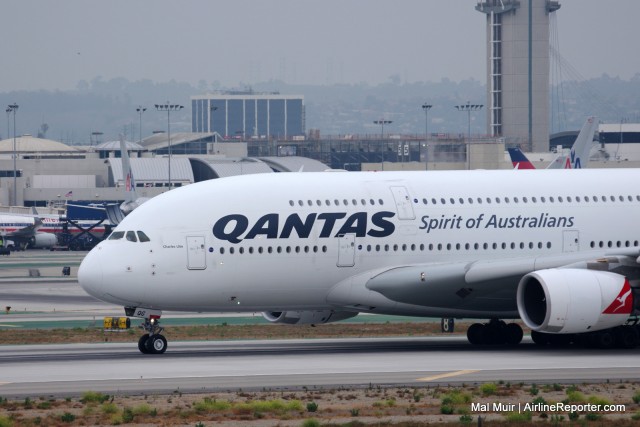
A very informative post, Mal. Thank you. Questions and thoughts; perhaps you can explain…
In the first sentence you write, “… heavily-restricted air travel market(s)…” I do not understand what you mean by ‘restricted.’
When Qantas provides an A380 between Australia and SFO, but only six days per week, what do they do with it on the seventh day? (We’re supposed to rest on the Seventh Day – I think, but other than Mx, airplanes don’t need the rest.) Are the flights structured such that the A380 is at home? Do they use it for another route? I cannot imagine that it is just parked.
For some of the longest, most extreme flights around the globe, unless the load factors truly justify it, I cannot see more than one super jumbo each way, each day. Pax using those extreme routes simply must expect a little inconvenience and a lost day when undertaking a trip of that length. (You’ve used the route several times; I’ve flown it only once. While not entirely unpleasant toward the pointy end, that is a LOT of hours to spend on an airplane, geek or not. Any more thoughts? Thanks.
Hi Cook
I think you might be a bit confused about what will be serving the SYD-SFO route. The route will be served by a 747-400 and will be run 6 days a week. Same as the SYD-DFW flight this is not daily (again 6 days a week). What do they do on the 7th day? I am sure it is rest for the aircraft. I am sure someone who is more on the Airline Management Side of things (paging Mr Bernie) can explain it better but to be able to serve a route daily you need a certain amount of aircraft to be able to do it allowing for MX downtime.
As for why is Australia to the USA a “Heavily Restricted Air Market” there is no “Open Skies” agreement between the two countries at all. Both countries decide who can fly between the countries and how many times a week they can do so. They also limit things like destinations etc. USA to New Zealand is another prime example of this. There are no direct flights a day other than with Air New Zealand, they are the only airline offering it because no one else is allowed to fly it (none of the US airlines wish to enter the fray and I am sure at least one of them is allowed).
United used to serve LAX to Auckland. They cut it out several years ago. Qantas also had that route, but eliminated it more recently (2011-12ish). I don’t know if there is enough demand for another airline. If any US carrier starts it, Air NZ is going to be upset, because it’s a gold mine for them right now.
Ah Ha! Thanks Mal,
Aircraft use will fall into place at the right time, perhaps when Bernie weighs in. As for the restricted environment, I did Not Know that that there was no Open Skies agreement between the U.S. and Australia. The lack there of explains a lot…
Thanks again for the great report.
Historic load factor detail would help to explain many things, but of course such detail is very closely held. Regardless of seats sold, moving an A380 or a B747 from West Coast, U.S.A. to Eastern Australia involves a lot more than pocket change. And, once an airline commits to a certain schedule, they are generally committed to operating the flights for some months, with or without a profitable load. Those calculations are extremely complicated and well above my (retired) pay grade. This will be interesting to watch… Regards,
-C.
What good timing, when I was just thinking about Australia! I’m saving up my miles for next year…